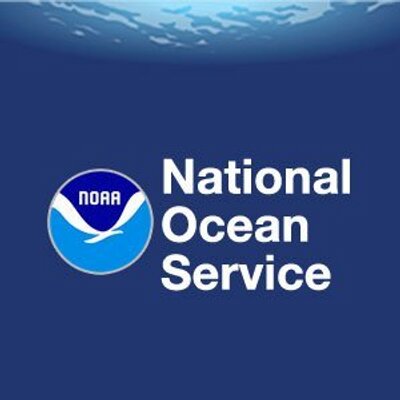
What is a Marine Protected Area?
NOAA's National Ocean Service explains that marine protected areas (MPAs) in the U.S. come in a variety of forms and are established and managed by all levels of government. There are marine sanctuaries, estuarine research reserves, ocean parks, and marine wildlife refuges. Each of these sites differ. MPAs may be established to protect ecosystems, preserve cultural resources such as shipwrecks and archaeological sites, or sustain fisheries production.
There is often confusion and debate regarding what the term "marine protected area" really means. Some people interpret MPAs to mean areas closed to all human activities, while others interpret them as special areas set aside for recreation (e.g., national parks) or to sustain commercial use (e.g., fishery management areas). These are just a few examples of the many types of MPAs.
In reality, “marine protected area” is a term that encompasses a variety of conservation and management methods in the United States. If you have been fishing in central California, diving near a shipwreck in the Florida Keys, camping in Acadia, snorkeling in the Virgin Islands, or hiking along the Olympic Coast, you were probably one of thousands of visitors to an MPA.
In the U.S., MPAs span a range of habitats, including the open ocean, coastal areas, inter-tidal zones, estuaries, and the Great Lakes. They also vary widely in purpose, legal authorities, agencies, management approaches, level of protection, and restrictions on human uses.
Protect Planet Ocean has this to say:
A marine protected area (MPA) is essentially a space in the ocean where human activities are more strictly regulated than the surrounding waters - similar to parks we have on land. These places are given special protections for natural or historic marine resources by local, state, territorial, native, regional, or national authorities. Authorities differ substantially from nation to nation.
There are many formal definitions of marine protected areas, but the most broadly used definition is the IUCN definition:
'A clearly defined geographical space, recognised, dedicated and managed, through legal or other effective means, to achieve the long-term conservation of nature with associated ecosystem services and cultural values'
Ocean Crest Alliance has the following to say:
What is a Marine Protected Area?
There are numerous definitions and ideas for what constitutes a Marine Protected Area. As defined by the IUCN, “a ‘protected area’ is ‘a clearly defined geographical space, recognized, dedicated and managed, through legal or other effective means, to achieve the long-term conservation of nature with associated ecosystem services and cultural values’.” This definition, used in establishing the World Database on Protected Areas, provides flexibility to governments to define activities and levels of activity that are permissible to achieve long-term conservation. However, it also leads to a large over-estimate of areas that are ‘protected’ based on other MPA definitions that restrict damaging activities such as fishing, oil and gas development and extraction, as well as other activities. MPAtlas is designed to better reflect the actual protection level intended through designation of MPAs.
Many MPAs provide partial protections for marine life (single or a few protected species, gear restrictions, seasonal closures, catch limits, etc.). Other MPAs are multiple-use areas, where a variety of uses are allowed. For example, there are many different kinds of MPAs in US waters including national parks, wildlife refuges, monuments and marine sanctuaries, fisheries closures, critical habitat, habitat areas of particular concern, state parks, conservation areas, estuarine reserves and preserves, and numerous others. While a few sites exist as no-take marine reserves, the vast majority of MPAs, both in terms of numbers and area, are open for fishing, diving, boating, and other recreational and commercial uses.
Currently about 1.6% of the world’s oceans are in MPAs; far less than on land (roughly 12%). Many marine ecosystems are currently not protected and others are vastly underrepresented in existing MPAs
Marine Reserves
Marine reserves are ocean areas that are fully protected from activities that remove animals or plants or alter habitats, except as needed for scientific monitoring. Most marine reserves are established with the goal of increasing the abundance and diversity of marine life inside the reserve. Scientific research shows that marine reserves consistently accomplish this goal. In contrast to many areas categorized as marine protected areas that allow a number of human activities, marine reserves set a higher standard and provide a greater level of protection. Marine reserves are also often termed “no-take” areas. Of the 6,000+ MPAs worldwide only a small fraction are in areas designated as no-take marine reserves. The vast majority of the ocean area that is in no-take MPAs exists in a few very large areas that are far from coasts and not necessarily representative of the oceans’ biodiversity.
Very Large Marine Reserves
There is accelerating momentum and opportunity for designating very large marine protected areas. A very large percentage of MPAs are tiny, nearly 50% are smaller than 10 sq km. Both small and large MPAs can export adults or larvae and be useful for fisheries by supplementing populations in surrounding areas, but MPAs are less useful for biodiversity if the animals they export suffer significant fishing mortality. MPAs that can reduce mortality and protect critical life history phases where they occur are much more effective for species that can complete their life cycles within MPAs.














